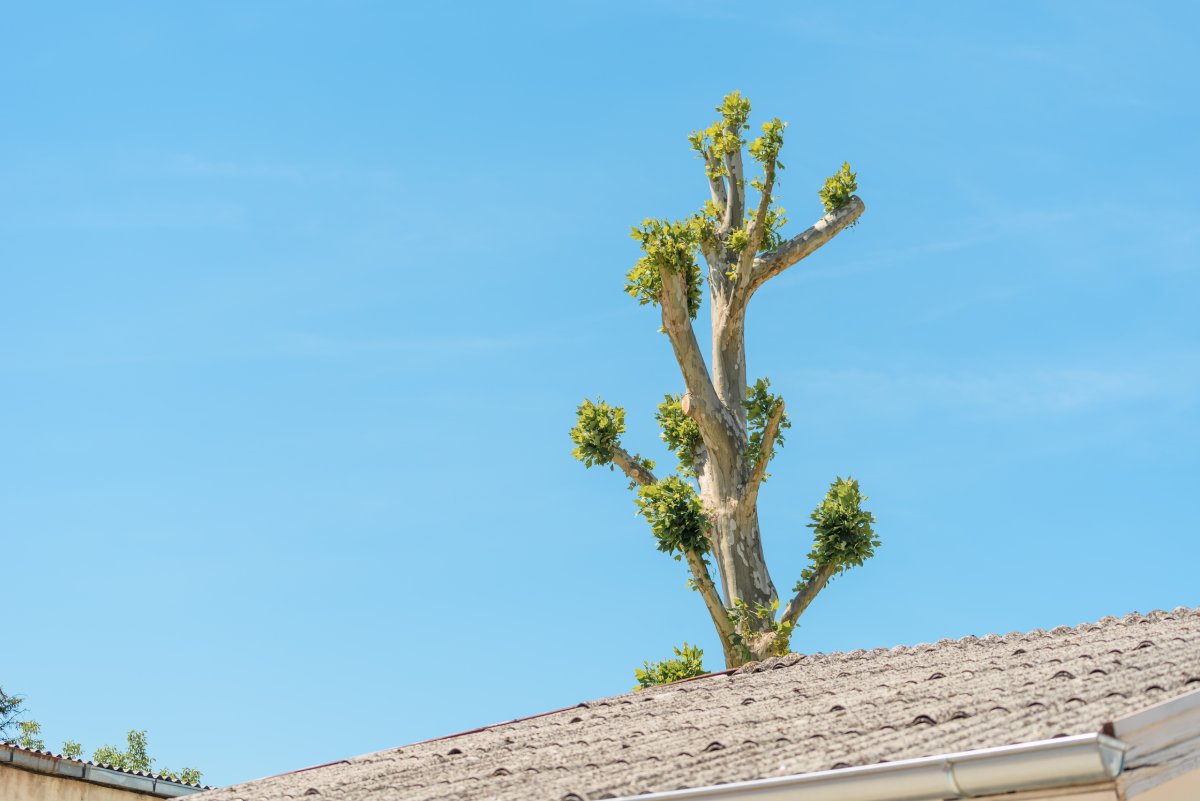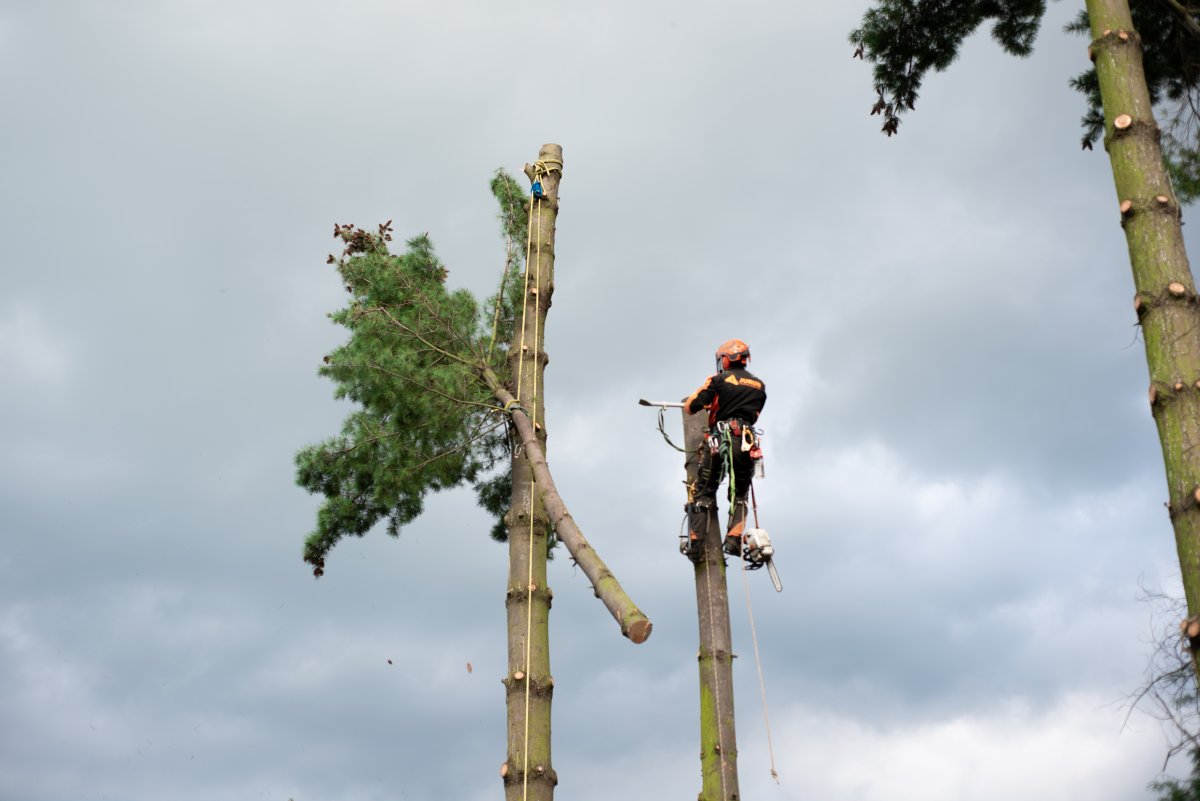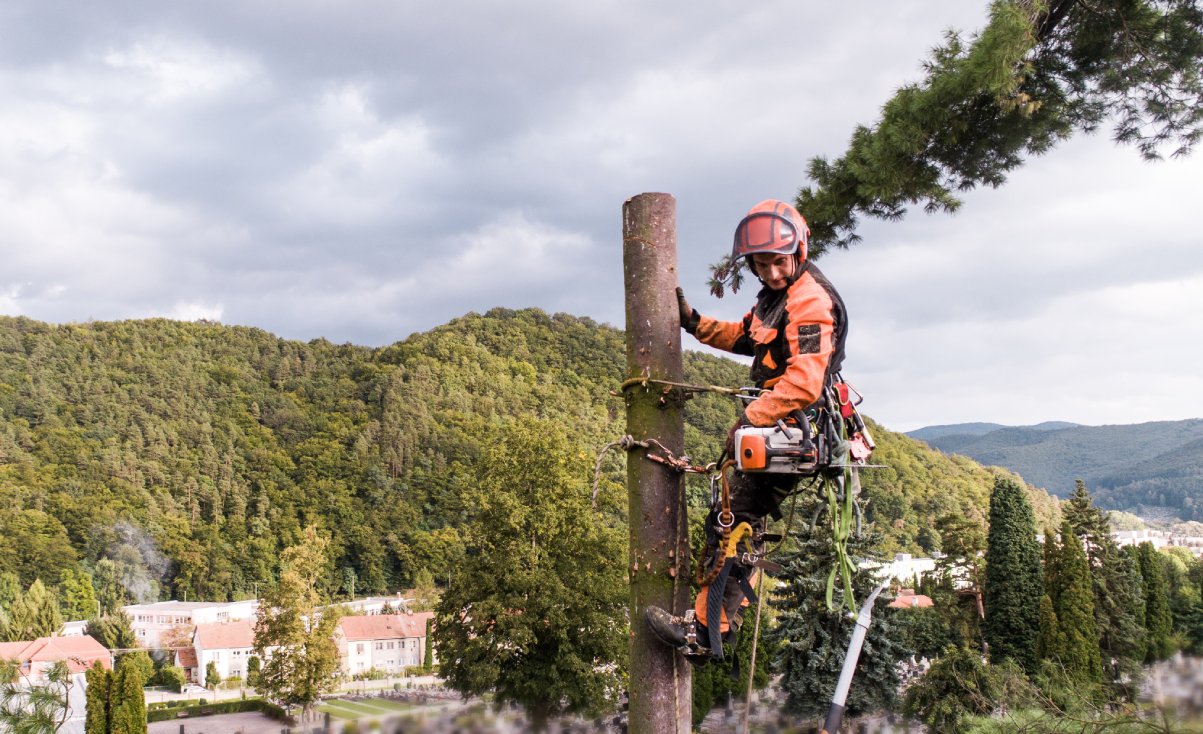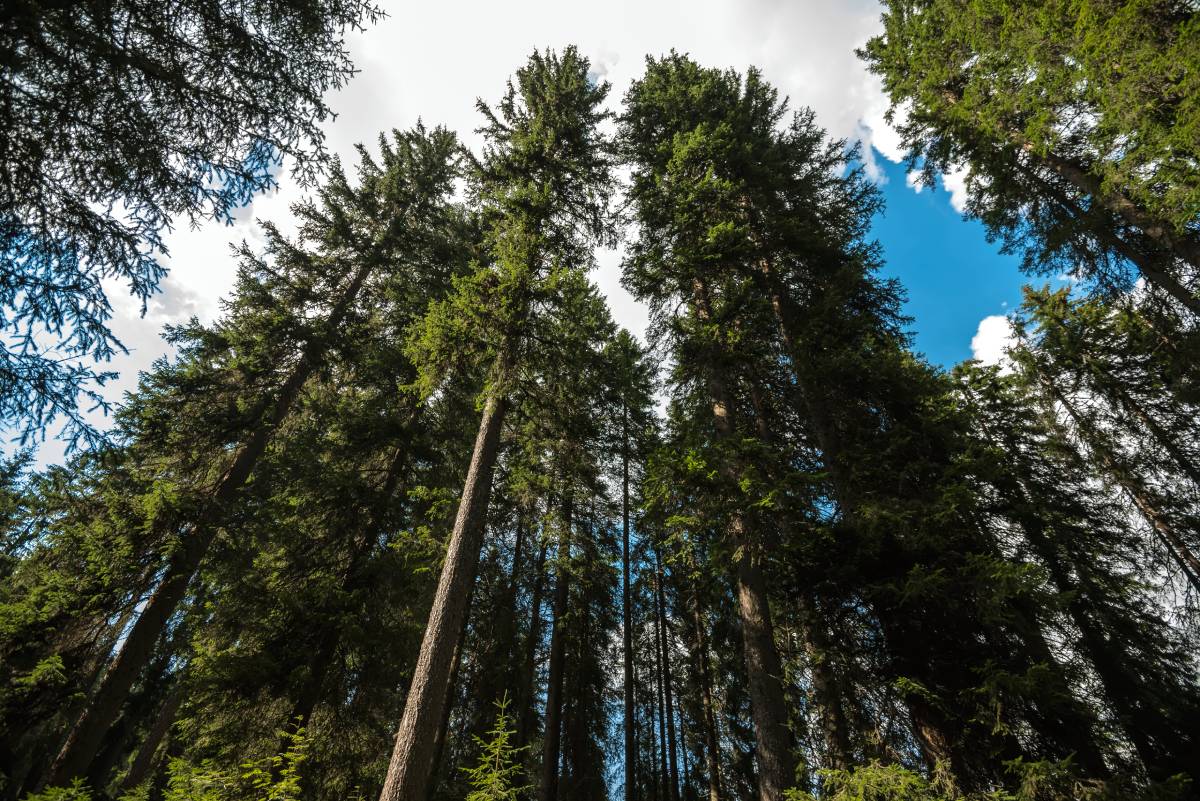Is It Harmful To Top A Tree? Can You Cut Off The Top Of A Tree Without Killing It? Does Topping A Tree Stop Root Growth? Read Before Taking Action.
Have you ever seen a tree that has visibly had the top part of its trunk and all of its crown removed? A haggard-looking tree with no leaves at all – like something out of a haunted forest. Such appearances are often the result of topping a tree.
But what is tree topping? Is it harmful to the tree? Are you able to cut the top off of a tree without killing it? And does topping a tree prevent root growth?
In this article, we’ll go into tree topping in greater depth so that you can decide whether it is something that you would still like to go ahead with. Here’s what you need to know on the subject…
What is tree topping?

In short, tree topping is the practice of removing the entire top of a tree or the large branches and/or trunks from the top of trees in order to reduce their size. Other common names for the practice include: “heading”, “hat-racking”, “rounding over” and “tipping”.
Is it harmful to top a tree?

Is it harmful to top a tree? The short answer is yes – absolutely. Topping is arguably one of the most harmful forms of tree pruning. It is a highly misguided practice and one that should be avoided at all costs – particularly if you want to keep your tree alive, happy, and healthy.
You’ve likely seen the results of topped trees many times before. Whenever you see a tree that has no foliage and has visibly been heavily cut at the top, it always looks lifeless and haggard.
Many people consider tree topping to be a crime against nature, especially given how precious our environment is and how hard our trees work to oxygenate our planet.
We understand why many homeowners may turn to topping in order to reduce the size of a tree, however, it is not a viable solution and often ends in disaster.
Can you cut off the top of a tree without killing it?

While in theory, it is possible to top a tree without killing it, the risks are far too great. When you top a tree, 100% of the leaf-bearing crown is excised. Given the fact that leaves are the food and energy source of a tree, the absence of a crown starves the tree.
In response, the tree will start sprouting multiple shoots from buds below each of the cuts. This survival mechanism is intended to put out as many different leaves as possible in order to make a recovery.
In the event that the tree doesn’t have much in the way of stored energy, the harm done by topping can be significant and will often leave to a premature decline resulting in death.
And while your tree may well be fortunate enough to survive this dangerous practice, the new limbs that are grown in response are exceptionally weak. As such, the structure of your tree will become significantly weaker, making it a hazard in storms and strong winds.
In addition to that, those new limbs will grow to the original height of the tree, thus taking you right back to where you started in the first place.
Topping doesn’t control the size of your tree
Again, a topped tree will sprout shoots and limbs that will eventually grow back to their original height. As such, you are not controlling the height of the tree, you are temporarily shortening it to the detriment of the tree’s health.
Does topping a tree stop root growth?

Contrary to popular belief, topping a tree doesn’t actually stop root growth. In fact, it makes roots grow even faster. This is another natural response to the lack of food and energy that the tree would otherwise get through its crown and leaves. Hence why the roots grow rapidly in search of water underground.
If the tree in question is in close proximity to your property, you’re taking a very serious risk by topping the tree. Those roots can invade utilities, drainage pipes, driveways, and walls – thus leading to potential damage to your property and/or blockages with your water drainage systems.
Is there a healthy way to top trees? What other alternatives are there?
If the height of your trees is a problem, for whatever reason, you should consult your local arborist before taking any action.
Let’s say that a specific tree is blocking the sunlight from entering one of your bedrooms – or spoiling the view. There are alternative methods you can adopt in order to clear the way. For example:
- Your professional arborist might recommend a safer form of tree pruning.
- In some cases, crown thinning might do the trick.
- If you would prefer the view, rather than the tree, it is – in some cases – possible to safely relocate a tree somewhere else on your property.
- If you aren’t so fussed about the tree itself, rather than have it topped, put the tree through unnecessary stress, and then have to top it again in a few years (if it survives), you can have it removed entirely instead and save the hassle. That said, tree removal is only something that we recommend for trees that are especially hazardous (e.g., they are diseased and dying).
Conclusion
To recap:
- Tree topping is the process of removing the top branches and foliage of a tree in order to reduce its height.
- This is an unsafe practice that puts unnecessary stress on a tree, often leading to death.
- It is a temporary solution. If the tree does survive the new shoots will grow back to the original size of the tree.
- Those new shoots that grow in response are weak and likely to break off in heavy winds.
- Tree topping doesn’t prevent shoot growth, but encourages it – often leading to underground utility and neighbouring property damage.
All in all, tree topping is a lazy practice that harms trees – often beyond repair. If you have a tree that you would like to try and reduce in height, contact a reputable arborist like AB Trees Perth, and they can prescribe an appropriate solution that suits you – and keeps the tree very much alive, happy, and healthy.
